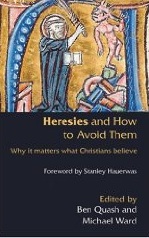
The chp is by Anders Bergquist, an Anglican vicar at St John’s Wood in central London.
Do you think there are any real Gnostics today? What elements of gnosticism do you see at work today?
Since “Gnosticism” commonly gets tossed at others today, let’s get a good definition on board. Gnosticism is a set of teachings in which:
1. People claim they are saved by initiation into special knowledge;
2. Taught by “a Jesus” who was not fully human and did not die;
3. Proponents practice special disciplines to effect release from the evil material realm that was created by an inferior god (Demiurge);
4. And this leads to reunion with the transcendent Divine Being.
Gnosticism was a category used by the orthodox (Irenaeus, Clement of Alexandria, Tertullian, Hippolytus) against a group of teachers (Valentinus, Basilides) rather than the explicit teaching of one person. The gnostics fed on typical church gatherings and appealed to “secrets.”
We used to rely on the critics of gnosticism to understand them. But now, since the discovery in 1945 of the Nag Hammadi library in Egypt, we have an entire collection of sources (see: The Nag Hammadi Library
). This literature is fantastical, mythical, and elaborate. Central to everything is that the material world is evil and the spiritual realm is the truth. Humans with a shard or spark of the true spiritual world, the Pleroma, are the gnostics. Texts like The Gospel of Judas and The Gospel of Thomas interpreted the canonical Gospels in a gnostic direction.
The orthodox, probably unfairly, extrapolated from the gnostic despising of the material world to the gnostic practice of sexual promiscuity, but the evidence we do have suggests the gnostics were ascetical rather than profligates. But, the orthodox scored a decisive blow when orthodoxy argued that there was one God, the Creator, and that Jesus took on bodily flesh and was really human. The material world is good. Furthermore, the gnostics increased the number of authoritative books of Scripture.
These opponents, contrary to the popularity of conspiracy theories at work today (propagated, unfortunately, too often by Bart Ehrman), knew the theological danger of gnosticism — with its radical depreciation of materiality and all that would mean for Christ’s humanity and for redemption — and fought hard to suppress the heresies. It wasn’t because they feared folks reading those texts so much as that they feared the denial of Christian truth. They did things the way things were done then: suppress by burning and by use of violence.

